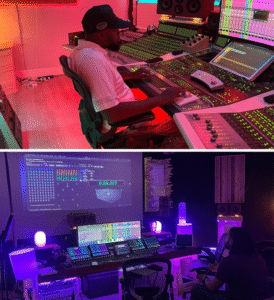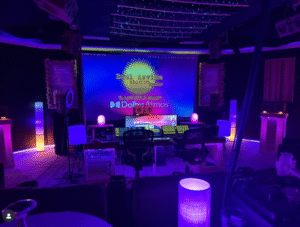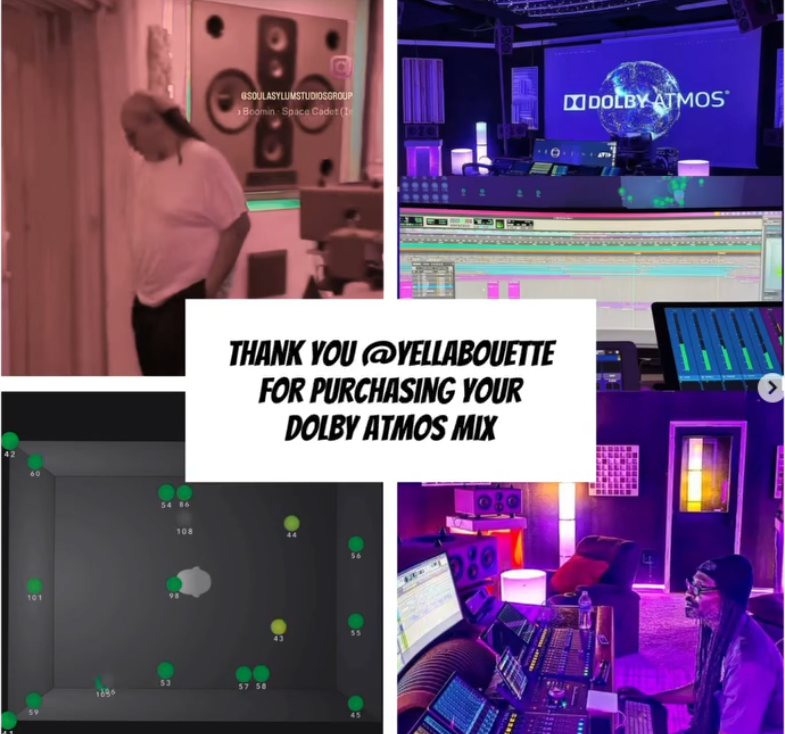Dolby Atmos is a revolution in the music industry. It has totally changed how you perceive and experience not only music, but also different audio. Unlike the traditional audio channels that used stereo, Dolby Atmos is different; it is an object-based audio technology. A technology that is beyond the limits of the early traditional stereo, or surround sound.
The traditional stereo audio technology is used to divide the sound between the left and right speakers. This gave a very flat, 2D experience to the listeners. The stereo technology helped create the direction of the song, but it couldn’t capture the essence of true spatial movement.
That’s where Dolby Atmos breaks the barrier; it adds dimension and depth to the music. Thus, allowing every element in the soundtrack to move freely all around and above the listener for a more realistic experience. If you’re looking to experience this immersive sound firsthand, a Dolby Atmos studio in Georgia offers the perfect environment to bring your music to life with unmatched clarity and spatial precision
How does Dolby Atmos work?
You can only unlock Dolby Atmos mixing mechanics to their full potential once you get a full understanding of it. Earlier, when the use of the traditional mix was at its peak, people used channels to assign sounds to the left, right, or center. Traditional mixes came with a lot of limitations; they didn’t provide you with many ways to create spatial depth in audio. That is when Dolby Atmos entered the audio market. In Dolby Atmos, you get to work with beds and objects, and not with strict channels.

Beds:
Beds are your static audio layers, usually of 7.1.2 channels, that provide you with the base for creating and experimenting with all the mixes. These experimentations often include drums, bass, and some core elements. You can also say that beds are the original layer that holds the main core structure of the audio track and maintains a sonic consistency.
Objects:
Here, objects mean the individual sounds that can move freely in a three-dimensional environment. The number of objects in this 3D environment can be up to 118. The work of these individual objects is to provide your audio track flexibility and depth that a traditional audio mix could never achieve. It helps you experiment with the positioning and movement of these objects in real-time.
Beds and objects are the two very important elements of the Dolby Atmos Files, and can be played on various devices with ease. Doesn’t matter whether you want to play your audio in a full studio setup or your regular headphones using spatial rendering. This flexibility of the Atmos audio field helps your listeners experience the premium 3D sound you created.
Why Musicians Should Care About Dolby Atmos:
Adopting the Dolby Atmos technology opens new doors to creativity and emotional possibilities for you, the artists. For the past few decades, the traditional stereo audio technology has been a standard. A static audio channel with zero to no flexibility. But today, things have changed, with increased use of platforms like Apple Music, Tidal, and Amazon Music that support spatial
audio. Dolby Atmos has started dominating the market. Dolby Atmos not only helps you flexibly experiment but also creates an immersive experience that connects with your audiences.
( Also Read More – Acoustical Design Considerations for Dolby Atmos Studios )
Reasons Why You Should Embrace Dolby Atmos:

1. Creative Freedom:
With Dolby Atmos, you get freedom, freedom to experiment, freedom to place objects wherever you feel like. You can move the sounds or reposition them anywhere; you can even place them above the heads of your listeners. This flexibility and freedom offer you new ways to narrate your stories and connect with your listeners.
2. Enhanced Listening Experience:
The objects in a Dolby Atmos environment can be placed anywhere, as you like. This, in turn, surrounds the listeners with your audio objects, hence providing deeper engagement and a premium experience. Your listeners can feel as if they are sitting inside the music video and experiencing the song in real life, rather than just listening to it.
( Read More – 10 Reasons Why Dolby Atmos is the Future of Music Listening? )
3. Industry Relevance:
Today, most of the emerging musicians like Billie Eilish and The Weeknd are using Dolby Atmos. If you are a new artist in the industry, using Dolby Atmos can help you stay relevant and modern at the same time in this rapidly evolving music world.
4. Future Proofing:
Spatial audio has become the new normal of the music playback industry. If you understand and leverage the power of Atmos now, you can stay ahead of others in the industry. How? The technology is ever evolving, and Atmos is the best way to stay ahead and reshape music consumption.
Setting Up Dolby Atmos Mix:
Before we get into this section, let’s understand something about the Atmos mix– Dolby Atmos can be both accessible and scalable. Plus, Dolby Atmos mix generation never asks you to have a full recording studio available with you in the first place. You can start your journey with a simple setup. All you need is the right Digital Audio Workstation (DAW) and headphones, and you can start experimenting.
Many Dolby Atmos studio Atlanta now offer professional Dolby Atmos mixing services for artists who want to work with expert engineers.
Basic Setup:
DAW Support:
You can go for either Logic Pro, Pro Tools, or Cubase that support Dolby Atmos. These DAW support systems come with built-in tools for panning and spatial placements.
Dolby Atmos Renderer:
The work of the Dolby Atmos Renderer is to position all the sound objects and monitor whether the 3D mix is working as per the intended design. It visualizes your entire mix in a 3D space, thus helping you to balance all the elements together.
Monitoring:
The speaker setups are ideal, and binaural rendering in headphones offers a great start. This, in turn, helps you to accurately monitor even in small spaces.
Conclusion:
Dolby Atmos is more than just a technical shift in the music industry– it is a creative revolution. Dolby Atmos has totally changed how you perceive music; it transforms music mixing into a multidimensional art form. It helps you provide a room to think beyond just stereo audio limits. It helps you craft soundscapes that surround and elevate the listener’s experience.
You will need to put a little more effort into this process; however, the results are worth it. It rewards creators with unparalleled depth and emotion. Doesn’t matter whether you’re working from home or collaborating with recording studios Atlanta or a Dolby Atmos studio Atlanta. Embracing this technology will position you at the forefront of modern music production.

